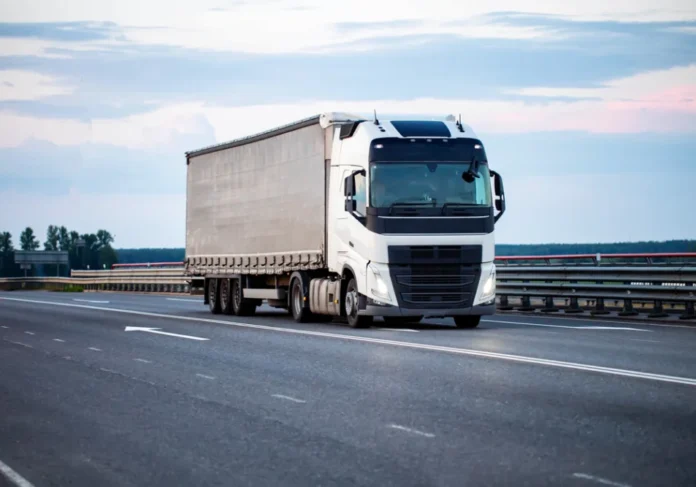Lightweight materials substantially enhance fuel efficiency by reducing vehicle weight, resulting in better fuel economy and lower CO₂ emissions. A reduction of 100 kg can improve fuel consumption by 0.4 L/100 km in cars and yield considerable savings in fuel costs. Innovations such as advanced composites and high-strength alloys are playing a crucial role in the automotive industry. As the demand for sustainable practices increases, the future impact of these materials on vehicle performance remains a topic of keen interest.
Highlights
- Lightweight materials, such as high-strength steel and carbon fiber, significantly reduce vehicle weight, enhancing fuel efficiency and lowering CO₂ emissions.
- A 100 kg reduction in vehicle weight can decrease fuel consumption by up to 0.4 L/100 km in cars and 0.5 L/100 km in light trucks.
- Advanced manufacturing processes allow for the integration of lightweight materials, improving structural integrity while minimizing weight for better vehicle performance.
- Reducing vehicle mass by 10% leads to a 6-8% efficiency gain, allowing for smaller and more cost-effective battery designs in electric vehicles.
- The market for lightweight materials is projected to grow, driven by regulatory pressures and the increasing adoption of electric vehicles, enhancing fuel efficiency.
The Science Behind Weight Reduction and Fuel Savings
As the demand for fuel efficiency rises, understanding the relationship between vehicle weight and fuel consumption becomes increasingly critical. Weight reduction plays a significant role in fuel dynamics, offering a direct path to improved fuel economy. Studies show that a mere 100 kg reduction can cut fuel consumption by 0.4 L/100 km in cars and 0.5 L/100 km in light trucks. This translates to substantial economic savings over long distances—up to $650 for trucks with a 50 kg decrease. Additionally, fuel economy improvements can be achieved by optimizing vehicle design and integrating hybrid powertrains, which demonstrate remarkable efficiency gains across weight classes. Machine learning models effectively analyze various vehicle attributes to enable better prediction of fuel efficiency outcomes. In city driving, where acceleration is frequent, weight savings yield even greater benefits due to reduced tractive effort. Ultimately, optimizing lightweight designs allows for more efficient engines, enhancing both performance and environmental responsibility while promoting a community committed to sustainability.
Advances in Material Innovations for Lightweighting
The pursuit of lightweight materials is revolutionizing the automotive industry, driven by the need for improved fuel efficiency and lower emissions. Recent innovations in material selection include high-strength steel and carbon fiber, enhancing structural rigidity while minimizing weight. Advanced manufacturing processes have introduced magnesium alloys and bio-based composites, recognized for their environmental benefits and recyclability. Remarkable advancements include aluminum-carbon fiber hybrids, achieving significant weight reductions in vehicle design, alongside compact thermal modules optimizing cooling systems. The integration of these materials not only enhances vehicle performance but also addresses safety and environmental concerns, as automakers adopt high-strength steel, alloys, ultimately pushing the industry towards greater sustainability. Additionally, the growing adoption of electric vehicles is driving demand for lightweight components, as the industry adapts to these innovations; the emphasis on lightweighting which improves range continues to shape the future of sustainable automotive engineering.
The Role of Lightweighting in Electric Vehicle Performance
While the shift to electric vehicles (EVs) emphasizes advancements in battery technology and charging infrastructure, lightweighting has emerged as a critical factor in enhancing overall vehicle performance. By reducing mass, manufacturers improve electric performance, ultimately achieving extended driving ranges and efficient acceleration. A mere 10% weight reduction can yield a 6-8% efficiency gain, allowing for smaller, cost-effective batteries without sacrificing range. Additionally, optimized vehicle structure enhances handling, stability, and cargo capacity, making EVs more versatile. Employing materials such as carbon fiber and aluminum alloys facilitates this vehicle optimization, ensuring a balance between structural integrity and weight savings. Consequently, lightweighting not only enhances driving dynamics but also aligns with lightweight technology goals, promoting a greener automotive future, with a more energetic and kinetic approach to vehicle design. Moreover, using lightweight components can lead to significant fuel savings, projected to save over 5 billion gallons of fuel annually by 2030. This commitment to innovative materials and design reflects Scilight Press’s dedication to advancing scientific knowledge in the automotive field.
Market Trends Shaping the Future of Automotive Lightweighting
Increasing emphasis on lightweight materials is substantially shaping market dynamics in the automotive industry. A sturdy market analysis reveals a projected value surge from $93.19 billion in 2025 to $162.94 billion by 2034, reflecting a 6.3% compound annual growth rate (CAGR). The U.S. and India are leading with respective CAGRs of 3.1% and 4.1%, fueled by regulatory pressures and electric vehicle (EV) adoption. Innovations like high-strength steel and aluminum are critical for achieving necessary weight reductions, while advanced manufacturing techniques, including additive manufacturing and low-pressure molding, enhance efficiency. Notably, the demand for automobile lightweight material is higher due to the auto industry’s need to limit emissions and save fuel. Moreover, the adoption of high-strength steel enables a 15-25% weight reduction compared to traditional steel, contributing significantly to enhancing overall fuel efficiency. An industry outlook indicates a shift towards sustainable materials, aligning with environmental goals, societal expectations, and the circular economy, consequently creating a sense of belonging in the shift towards responsible automotive practices. The Asia Pacific industry is anticipated to capture the largest revenue share of 37.5% by 2034, which illustrates the significant growth potential in regions focusing on sustainable transportation.
Strategic Approaches to Implementing Lightweight Materials
Implementing lightweight materials in the automotive sector requires a complex strategy that encompasses material selection, structural optimization, and advanced manufacturing processes. Key components of this strategy involve careful material sourcing, favoring advanced composites and multi-material construction techniques to enhance strength-to-weight ratios. Employing structural optimization techniques, such as topology optimization and load-path analysis, guarantees materials are efficiently distributed to resist real-world stresses while minimizing mass. Moreover, innovative manufacturing strategies, including additive manufacturing and advanced welding techniques, facilitate the production of complex geometries and high-strength components. This approach is essential as automotive lightweighting plays a core aspect for sustainable mobility, improving fuel consumption and CO2 emissions. The use of advanced metals like aluminum and magnesium is essential for producing lightweight components that enhance overall vehicle performance. Furthermore, the shift towards environmental benefits associated with weight reduction continues to motivate advancements in material technology and vehicle design.
Measuring the Energy Impact of Weight Reduction
As automotive manufacturers prioritize weight reduction to enhance fuel efficiency, quantifying the energy impact of these efforts becomes essential. Reducing vehicle weight by 100 kg can lead to significant fuel savings, with gasoline cars achieving a reduction of up to 0.35 L/100km. This weight loss directly correlates with decreased CO₂ emissions, yielding an environmental benefit of about 9g/km per 100 kg reduction. Additionally, lighter vehicles create economic advantages, as a mere 10 kg weight cut can save drivers between $104 and $130 over 200,000 km. The combined effect of immediate fuel savings, long-term economic benefits, and reduced emissions reinforces the critical role of lightweight materials in promoting sustainability and cost-effectiveness in the automotive industry. Moreover, studies have shown that manufacturing and using an electric vehicle can result in less GHG emissions than an internal combustion vehicle.
Challenges and Opportunities in Advanced Material Costs
While the push for lightweight materials in the automotive industry promises enhanced fuel efficiency and reduced emissions, the financial challenges associated with these advanced materials present significant obstacles. Advanced materials, such as carbon fiber, can cost 10 to 50 times more than traditional options like steel, inhibiting mass-market adoption. Production challenges, including capital-intensive manufacturing facilities and slow scalability, further complicate this shift. However, opportunities exist for cost reduction through innovative strategies, such as hybrid material designs and shared production infrastructures. Additionally, increasing demand for fuel-efficient vehicles may drive down costs via enhanced R&D. As the automotive lightweight material market continues to grow, the industry will likely focus on collaboration to create solutions that bridge the gap between innovation and affordability. Ultimately, overcoming these material costs requires collaboration within the industry to create sustainable pathways for the integration of lightweight technologies into mainstream automotive manufacturing.
Conclusion
To summarize, the integration of lightweight materials represents a revolutionary approach to enhancing fuel efficiency across the automotive industry. As advancements in material innovation continue to progress, their impact is particularly significant for electric vehicles, which benefit from reduced weight and improved performance. However, challenges such as cost management and material sourcing remain. As market trends evolve, strategic implementation of these lightweight solutions will be essential for manufacturers aiming to optimize sustainability and performance in their vehicles, ultimately leading to a metamorphic change. In the final analysis, the adoption of lightweight materials will revolutionize the automotive sector.
References
- https://www.energy.gov/eere/vehicles/lightweight-materials-cars-and-trucks
- https://www.cleantech.com/vehicle-fuel-economy-innovative-materials-and-processes-that-lighten-the-load/
- https://www.prescouter.com/2021/09/automotive-lightweighting-strategies-for-improving-fuel-efficiency/
- https://pmc.ncbi.nlm.nih.gov/articles/PMC11046240/
- https://www.nist.gov/lightweighting
- https://natural-resources.canada.ca/sites/www.nrcan.gc.ca/files/oee/pdf/transportation/fuel-efficient-technologies/autosmart_factsheet_16_e.pdf
- http://large.stanford.edu/courses/2010/ph240/danowitz1/
- https://www.h3xed.com/blogmedia/Ricardo_FE_MPG_Study.pdf
- https://pmc.ncbi.nlm.nih.gov/articles/PMC12037838/
- https://core.ac.uk/download/pdf/620872490.pdf


